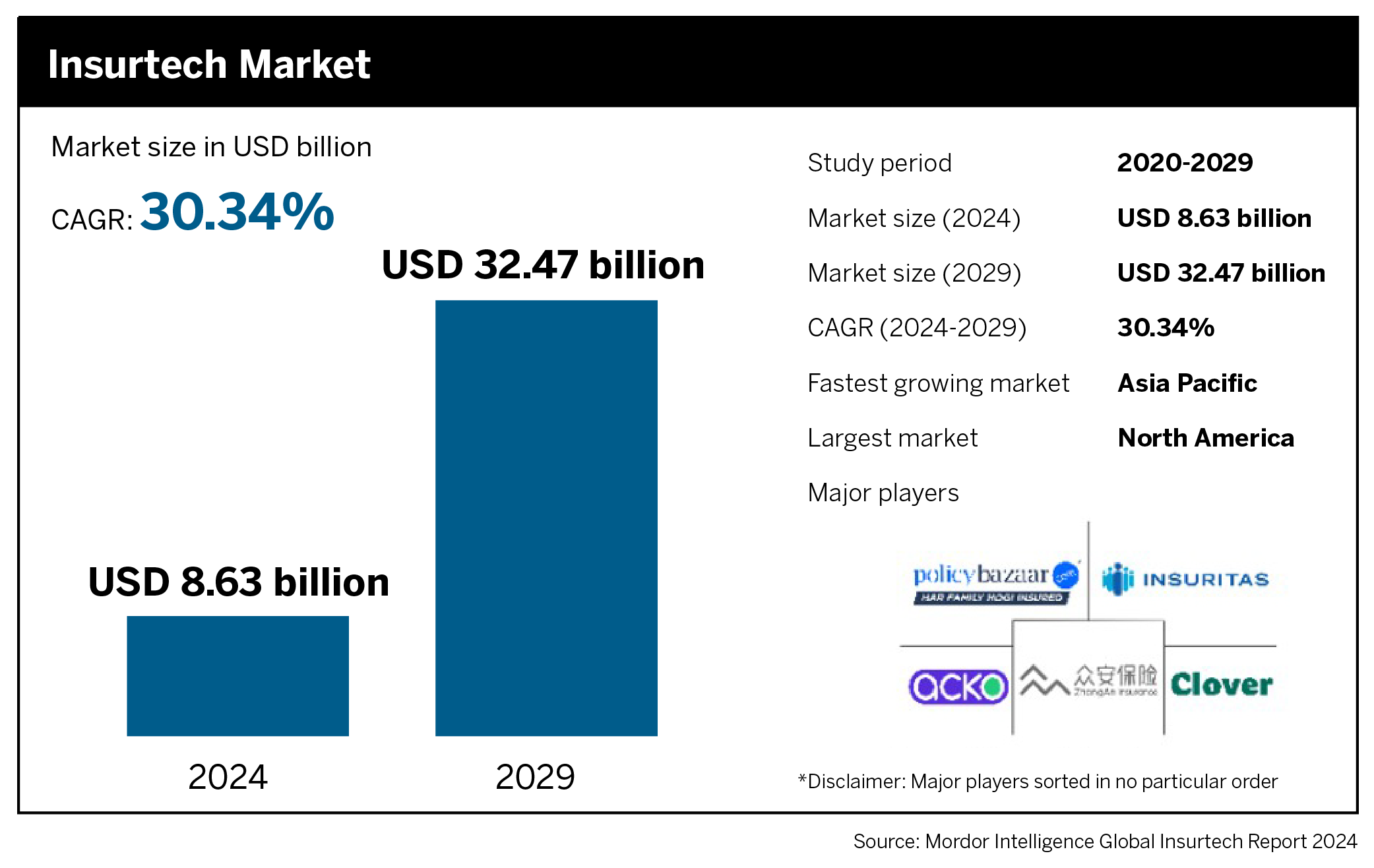
This post is part of a series sponsored by AgentSync.
The cost of outdated technology
In 2023, companies in the financial services industry spent an average of 15 percent of their revenue on technology. Not only is that a 10 percent increase in 2022, but it’s also near the top of the list when considering the industry’s IT spending as a percentage of revenue. Only companies in the actual technology industry, such as software companies and managed services companies, spend a larger proportion of their annual revenue on IT!
One could argue that this is because financial services companies, particularly in the insurance sector, are becoming increasingly technologically advanced. On the other hand, one could argue that financial services companies’ overspending on technology is a result of them spending too much money on outdated technology that is not cost-effective.
While the private insurance industry is not the U.S. government, reliable government data gives an indication of how much money other industries may be spending to maintain existing systems, including those that would be considered “legacy technology.” According to the Government Accountability Office (GAO), “the federal government spends more than $100 billion each year on IT and cyber investments.” Of that amount, agencies typically reported about 80 percent on operations and maintenance of existing IT, including legacy systems.”
When you think about how much money the insurance industry as a whole spends on maintaining outdated technology, even by conservative estimates, this could represent a large portion of the 15 percent of revenue that it spends on IT overall.
And what is that 15 percent? According to the Insurance Information Institute (III), the entire U.S. insurance industry generated $1.4 trillion in premium dollars in 2021. So let’s see… 80 percent of 15 percent of almost a trillion and a half dollars? You do the math! (But seriously, Google says it’s about $168 billion).
Given this staggering number, we decided to share some of the best things your insurance carrier, agency, or MGA/MGU could be spending that money on if you weren’t using it to support outdated technology.
But first…
Why is supporting legacy technology so expensive?
Legacy technology costs more to maintain, secure and maintain than its modern equivalent.
A long time ago, the entire software business worked differently than it does today. You had a computer housed in a single location – perhaps your living room. And you bought software that came in a box and you “owned” it until the end of time. Let’s take Microsoft Word as a well-known example that everyone can remember.
Side note: If you don’t remember a time when you bought Microsoft Word in a box at an office supply store, you’re a member of the newer generation of insurance professionals – Welcome!
In the past, you paid a one-time purchase price for your software and got the right to use it forever. What you didn’t know was that forever came with a price you couldn’t have foreseen at the time.
As technology advanced, your version of Microsoft Word slowly stopped working like it used to. There were certainly no new features to improve functionality over time. At some point you would need a new computer to keep up with rapidly evolving technology (hello, Internet!) – but since you bought a copy of Microsoft Word 1995 in 2002 and it doesn’t work on your new computer, you did I have to buy another version. The new device will probably be available at an even higher price than when you first purchased it.
These are costs that you did not expect. Because when you first bought the software, it came with the promise that it would be yours for life, not with the explanation that you would have to spend more money every few years to continue using it.
Not only have you had to buy (the same) new software over and over again, but you’ve also found that hackers are taking advantage of your product’s age to break in and steal your data. The longer a software is available without changes and updates, the more time attackers have to figure out how to use it for malicious purposes. This means that you had to buy Norton Antivirus to protect your computer. Yet another cost factor.
The analogy could hold for quite a while and you still wouldn’t be nearly as complex or expensive as legacy enterprise-level software. That’s why it’s so expensive for companies to simply maintain the technology they bought decades ago, even if they get no real return for their continued investment.
Why aren’t insurance companies modernizing their technology?
The quick answer is: it’s neither easy nor inexpensive! Modernizing a large and complex business system such as that used to manage insurance carriers, agencies and MGAs/MGUs can take months or years to get up and running.
Such modernizations can involve extensive data cleansing and migration projects, result in operational disruptions and downtime, and can be costly, intimidating, and time-consuming. And there is no guarantee that the project will be successful at all at the end of the day, whether from a technological perspective or simply due to a lack of buy-in and acceptance from its intended users.
Side note: This is why our world-class implementation process is so important.
Still, the solution isn’t to bury your head in the sand and pretend that your decades-old legacy systems will be functional for the next few years or even longer. Right, Southwest Airlines?
The decision to modernize your insurance technology stack shouldn’t be made on a whim. It takes a lot of time and resources to get it right: from evaluating different solutions to making the case for your chosen partner. However, once you take the step to modernize, you’ll notice cost savings and may wonder what else your company could do with that money.
10 things an insurance company could spend money on instead of outdated technology
To make the case for modernization, here are ten things your company could invest money in with the savings you’d get from moving away from outdated technology. Some of them are more pragmatic than others, but we believe in dreaming big!
- Modern insurance infrastructure: OK, so this is kind of obvious. You could spend money (although a lot less!) on modern insurance technology instead of outdated insurance technology. In any case, you need technology infrastructure to power your business: you simply don’t need to spend that much on it when it offers so little value.
- Better customer experience: Whether you do this by hiring more customer service representatives to reduce response times or by investing in a smartphone app that allows customers to contact you immediately with questions, you can improve the customer experience by using Investing money you don’t have Prolonged spending on outdated technology.
- Eco-friendly office upgrades: Go green by investing in eco-friendly office upgrades. Think about solar panels, a green roof or even creating a company garden. It’s good for the planet and can improve employee satisfaction.
- High-tech training programs: Employees will really benefit if you use your legacy technology budget to train them on cutting-edge technology. Maybe it’s data analytics, cybersecurity, the use of AI or blockchain technology. Either way, employees will gain valuable skills that will help them in their careers, and they will appreciate the opportunity.
- Home office upgrades: With much of the insurance industry workforce participating in a hybrid work arrangement, you can improve your employees’ lives by giving them a budget for things that will make their work from home more comfortable and productive. Ergonomic chairs, standing desks, and noise-cancelling headphones are just a few ideas you can offer any employee with the money you don’t spend on supporting outdated technology.
- Wellness retreats and mental health benefits: Satisfied employees are productive employees. So putting some of your savings toward wellness benefits like gym memberships, spa experiences, mindfulness classes, or even day-long wellness retreats is a great way to show your team how much you care about overall health.
- Charitable donations or related fundraising programs: If you’re looking for a good way to spend some of your savings, consider giving back to the community. Employees love being able to use funds for causes that are close to their hearts. You can even set up an employer match so employees can double their impact in fundraising for their most passionate causes.
- Petting zoo in the office: Forget “bring your dog to work every day” – this idea is all about letting off steam in the office. Nothing breaks the monotony of work like an alpaca in the elevator or a bunny at your desk. Even without lions, tigers, and bears, you can give your employees an unforgettable experience with small farm animals like goats, miniature horses, and other office-sized animals.
- Child care on site: Although costly, providing child care to employees is one of the biggest benefits for those with minor dependents. It could be an investment with a worthwhile ROI, especially if you’ve recently freed up budget after reducing your legacy technology spending.
- An extreme team building experience: Go beyond happy hours and bowling and create the ultimate team-building experience, like a company-wide escape room challenge or survival skills weekend, to promote bonding and develop problem-solving skills in fun and unusual environments.
Ready to save money by modernizing your insurance licensing compliance processes?
Even if you don’t reallocate funds to one of our ideas, your company won’t mind cutting back on legacy technology spending by switching to a modern insurance compliance solution that covers everything from producer and adjuster licensing to Renewals, state appointments and continued training and management of dual licensed broker-dealers also with real-time FINRA data!
Learn how companies in the insurance industry can turn compliance into cost savings in our guide, “Don’t let compliance compete with costs.” If you would like to learn how AgentSync can help your company modernize your business and save money, contact one of our insurance compliance technology experts today.
subjects
InsurTech Tech
Source link
2024-06-11 04:51:21
www.insurancejournal.com











